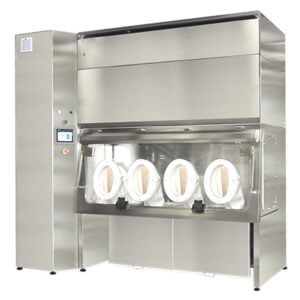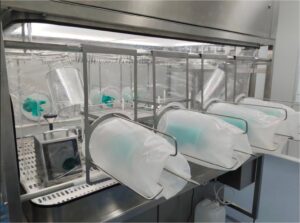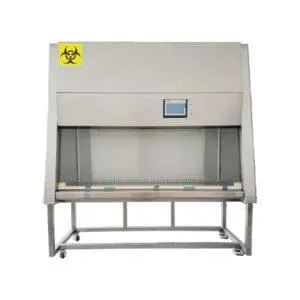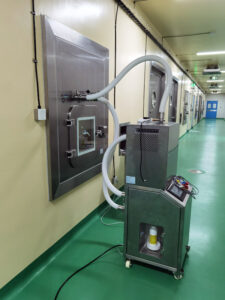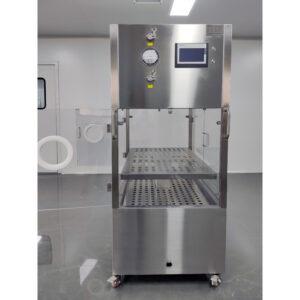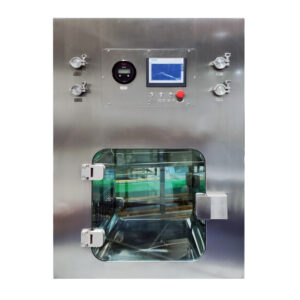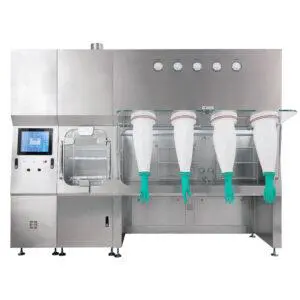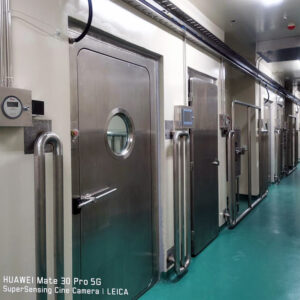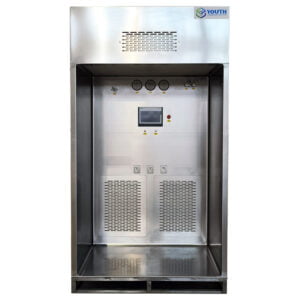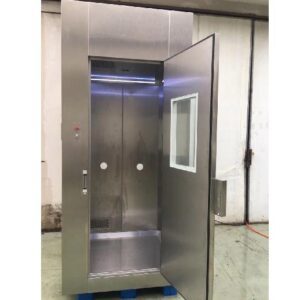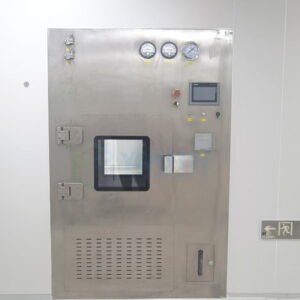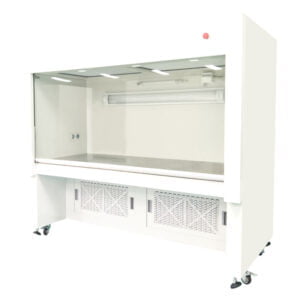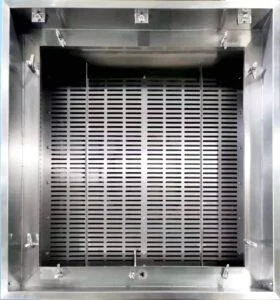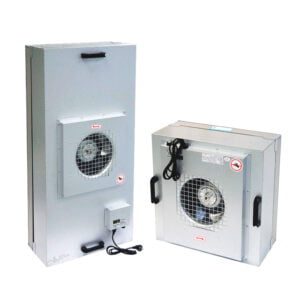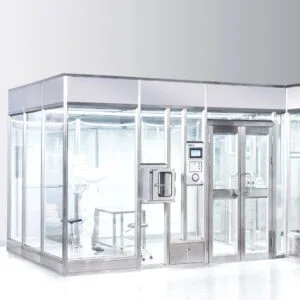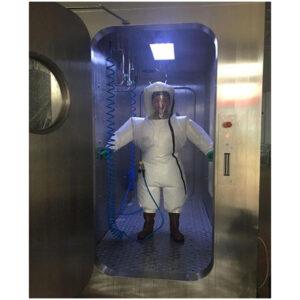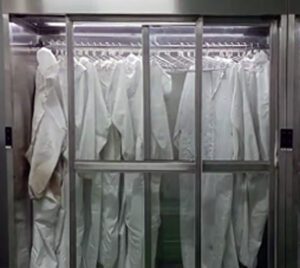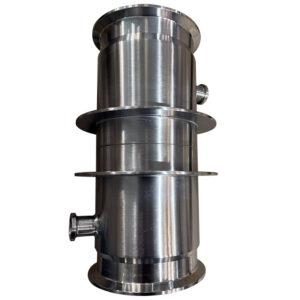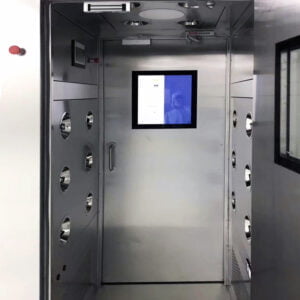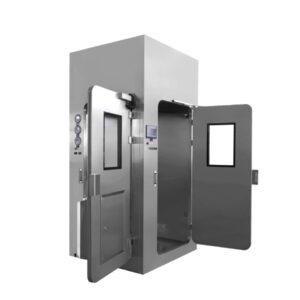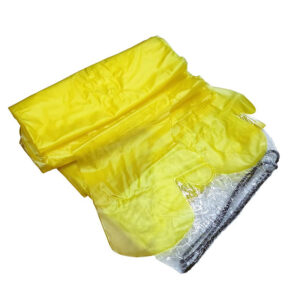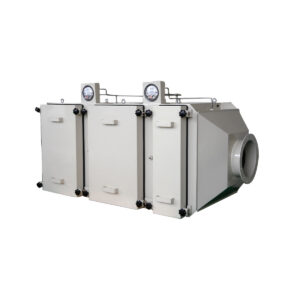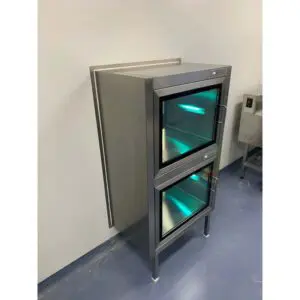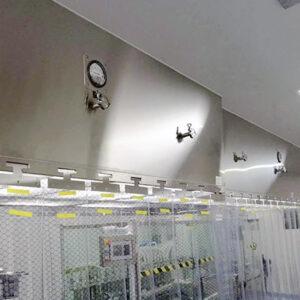Modern pharmaceutical manufacturing demands the highest levels of contamination control, yet many facilities struggle with implementing systems that meet both operational efficiency and regulatory compliance standards. The complexity of GMP BIBO systems often overwhelms manufacturing teams, leading to costly validation delays and potential compliance gaps that can shut down production lines.
Without proper understanding of FDA requirements and validation protocols, pharmaceutical manufacturers face severe consequences: regulatory citations, product recalls, and manufacturing shutdowns that can cost millions in lost revenue. The stakes couldn’t be higher when patient safety and business continuity hang in the balance.
This comprehensive guide provides essential insights into GMP compliant BIBO systems, FDA requirements, and proven validation strategies that ensure both regulatory compliance and operational excellence. YOUTH Clean Tech brings decades of cleanroom expertise to help you navigate these critical requirements successfully.
What is GMP Compliant BIBO and Why Does It Matter?
Understanding BIBO Technology Fundamentals
BIBO (Bag-In-Bag-Out) technology represents a critical containment solution designed to safely handle hazardous materials in pharmaceutical manufacturing environments. The system operates on a simple yet effective principle: contaminated filters are removed within sealed bags, preventing operator exposure and environmental contamination during maintenance procedures.
GMP compliant BIBO systems must meet stringent requirements that go far beyond basic containment functionality. These systems incorporate validated filtration efficiency ratings of 99.97% at 0.3 microns, documented airflow patterns, and comprehensive monitoring capabilities that ensure continuous compliance with pharmaceutical manufacturing standards.
In our experience working with leading pharmaceutical manufacturers, the most successful implementations focus on three core elements: robust engineering design, comprehensive documentation packages, and ongoing validation maintenance programs that adapt to evolving regulatory requirements.
GMP Standards in Pharmaceutical Manufacturing
Good Manufacturing Practice regulations establish the foundation for all pharmaceutical containment systems, requiring manufacturers to demonstrate consistent product quality and safety through documented procedures and validated equipment performance. The FDA’s Current Good Manufacturing Practice (cGMP) guidelines specifically address air handling systems and their role in preventing cross-contamination.
According to FDA guidance documents, containment systems must maintain classified environmental conditions while providing operator protection during normal operations and maintenance activities. This dual requirement creates unique engineering challenges that validated BIBO systems address through integrated design approaches.
Recent industry surveys indicate that facilities using GMP compliant BIBO systems report 73% fewer contamination incidents compared to traditional filter change methods, demonstrating the technology’s effectiveness in maintaining controlled manufacturing environments.
Critical Role in Contamination Control
The pharmaceutical industry’s zero-tolerance approach to contamination requires containment solutions that eliminate human error and environmental exposure risks. BIBO technology achieves this through engineered containment procedures that prevent filter bypass and ensure complete isolation of contaminated materials.
| Contamination Control Factor | Traditional Systems | GMP BIBO Systems |
|---|---|---|
| Operator Exposure Risk | High | Eliminated |
| Environmental Release | Possible | Contained |
| Validation Complexity | Moderate | Comprehensive |
| Documentation Requirements | Basic | Extensive |
However, implementing these systems presents challenges including higher initial capital costs and more complex validation requirements that can extend project timelines by 3-6 months compared to standard installations.
How Do FDA Requirements Shape BIBO System Design?
FDA Guidelines for Containment Systems
FDA regulations under 21 CFR Part 211 establish specific requirements for air handling systems in pharmaceutical manufacturing, emphasizing the need for validated containment procedures and documented performance verification. These guidelines directly influence BIBO system design through requirements for filter integrity testing, airflow verification, and contamination prevention protocols.
The FDA’s guidance on sterile drug products manufactured by aseptic processing specifically addresses containment system validation, requiring manufacturers to demonstrate that maintenance procedures don’t compromise product sterility or environmental classification. This requirement drives the need for pharmaceutical BIBO compliance that includes comprehensive testing protocols and ongoing monitoring systems.
Industry experts note that FDA inspectors increasingly focus on containment system validation during facility inspections, with 67% of recent Warning Letters citing deficiencies in air handling system documentation or validation procedures.
Documentation and Traceability Standards
Regulatory compliance demands extensive documentation that traces every aspect of BIBO system performance from initial qualification through ongoing operations. The FDA requires manufacturers to maintain detailed records of filter performance, maintenance procedures, and any deviations from established protocols.
A comprehensive documentation package typically includes:
- Installation Qualification (IQ) protocols demonstrating proper system installation
- Operational Qualification (OQ) procedures validating system performance parameters
- Performance Qualification (PQ) testing confirming ongoing operational effectiveness
- Standard Operating Procedures (SOPs) for routine maintenance and monitoring
- Change control procedures for system modifications or upgrades
Quality Assurance Protocols
FDA expectations for quality assurance extend beyond basic system functionality to encompass risk management approaches that identify and mitigate potential failure modes. BIBO regulatory compliance requires manufacturers to implement Quality Risk Management (QRM) principles that assess contamination risks and establish appropriate control measures.
According to pharmaceutical quality professionals, successful QA programs incorporate real-time monitoring capabilities that provide immediate alerts for system deviations, enabling rapid corrective actions that prevent contamination incidents.
What Are the Essential Components of Validated BIBO Systems?
Filter Integrity and Performance Specifications
High-efficiency particulate air (HEPA) filters in GMP BIBO systems must meet or exceed 99.97% efficiency at the most penetrating particle size of 0.3 microns, with validated testing procedures that confirm ongoing performance throughout the filter lifecycle. These specifications ensure consistent contamination control while providing documented evidence of system effectiveness.
Filter integrity testing protocols typically include DOP (dioctyl phthalate) challenge testing at installation and periodic verification using photometric scanning techniques that identify any filter defects or seal failures. The testing frequency ranges from monthly to quarterly depending on manufacturing criticality and risk assessments.
Recent technological advances have introduced real-time filter monitoring systems that continuously assess filter performance, providing immediate alerts for efficiency degradation that could compromise manufacturing operations.
Sealing Mechanisms and Validation Points
The critical interface between contaminated and clean environments requires engineered sealing systems that prevent bypass during filter change procedures. GMP compliant BIBO systems incorporate multiple validation points throughout the containment envelope, ensuring complete isolation of hazardous materials.
| System Component | Validation Requirement | Testing Frequency |
|---|---|---|
| Primary Seals | Leak Rate < 0.005% | Each Use |
| Secondary Containment | Visual Integrity | Daily |
| Bag Attachment Points | Secure Connection | Each Change |
Validation points include primary filter seals, bag attachment interfaces, and secondary containment barriers that provide redundant protection against contamination release.
Monitoring and Control Systems
Modern pharmaceutical BIBO compliance systems integrate sophisticated monitoring capabilities that track critical parameters including differential pressure, airflow rates, and filter performance metrics. These systems provide continuous documentation of operating conditions while alerting operators to potential issues before they impact manufacturing operations.
Advanced control systems incorporate predictive maintenance algorithms that analyze performance trends and recommend optimal filter change intervals, reducing both operational costs and contamination risks.
How to Achieve Pharmaceutical BIBO Compliance?
Installation and Commissioning Requirements
Successful pharmaceutical BIBO implementation begins with detailed engineering specifications that address facility-specific requirements including airflow patterns, contamination risks, and operational procedures. The commissioning process must demonstrate that installed systems meet all design specifications and regulatory requirements before beginning manufacturing operations.
Commissioning activities typically span 8-12 weeks and include comprehensive testing of all system components, validation of containment procedures, and training of operational personnel on proper system use and maintenance procedures.
In our experience with pharmaceutical installations, the most successful projects allocate 25-30% of total project time to commissioning and validation activities, ensuring thorough documentation and regulatory compliance from day one.
Operational Qualification Procedures
Operational Qualification represents the critical phase where validated BIBO systems demonstrate their ability to consistently perform within specified parameters across the full range of operating conditions. This testing phase validates system performance under various scenarios including normal operations, emergency conditions, and maintenance procedures.
OQ protocols must demonstrate that containment effectiveness remains consistent regardless of operator skill level or external conditions, requiring standardized procedures that eliminate human variability from critical containment operations.
Maintenance and Calibration Protocols
Ongoing system performance requires structured maintenance programs that combine predictive monitoring with scheduled interventions based on validated service intervals. These programs ensure continuous compliance while optimizing operational efficiency through data-driven maintenance decisions.
Calibration requirements for monitoring instruments typically follow annual schedules, though critical parameters may require monthly or quarterly verification depending on manufacturing risk assessments and regulatory requirements.
What Validation Challenges Do BIBO Systems Present?
Common Compliance Pitfalls
The complexity of GMP BIBO validation often leads to common mistakes that can compromise regulatory compliance and operational effectiveness. These challenges include inadequate documentation of containment procedures, insufficient testing of failure modes, and incomplete training programs that don’t address all operational scenarios.
One significant challenge involves demonstrating containment effectiveness during emergency procedures when normal protocols may not apply. Validation programs must address these scenarios through comprehensive testing and documented procedures that maintain containment under all conditions.
Industry data suggests that 43% of initial FDA inspections identify deficiencies in containment system validation, highlighting the importance of thorough preparation and comprehensive documentation.
Testing and Documentation Requirements
Validation testing must demonstrate system performance across multiple parameters including containment effectiveness, filter integrity, airflow patterns, and operator protection factors. This comprehensive approach requires specialized testing equipment and expertise that many facilities lack internally.
Documentation requirements extend beyond basic test results to include detailed procedures, training records, and change control documentation that demonstrates ongoing compliance with established protocols.
Ongoing Validation Maintenance
Maintaining validation status requires continuous monitoring and periodic requalification that confirms ongoing system performance and regulatory compliance. This process includes scheduled testing, documentation updates, and system modifications that address changing manufacturing requirements or regulatory updates.
The challenge lies in balancing operational efficiency with regulatory requirements, ensuring that validation activities don’t unnecessarily disrupt manufacturing operations while maintaining full compliance.
How Do GMP BIBO Systems Compare to Standard Solutions?
Performance Metrics and Efficiency Data
GMP compliant BIBO systems demonstrate superior performance across multiple metrics compared to traditional filter change methods, with containment effectiveness approaching 100% under normal operating conditions. Performance data from pharmaceutical installations shows significant improvements in operator safety and environmental protection.
| Performance Metric | Traditional Systems | GMP BIBO Systems |
|---|---|---|
| Containment Effectiveness | 85-95% | >99.9% |
| Operator Exposure | Measurable | Below Detection |
| Environmental Release | Periodic | Eliminated |
| Validation Complexity | Moderate | High |
| Long-term Costs | Higher | Lower |
While initial implementation costs are typically 40-60% higher than standard systems, long-term operational benefits including reduced contamination incidents and simplified maintenance procedures often justify the investment within 3-5 years.
Cost-Benefit Analysis
The economic justification for GMP BIBO systems extends beyond simple capital cost comparisons to include risk mitigation benefits that protect against regulatory citations and manufacturing shutdowns. These systems provide insurance against costly compliance failures while improving operational efficiency through standardized procedures.
Case Study: A major pharmaceutical manufacturer reported annual savings of $2.3 million after implementing GMP BIBO systems across three manufacturing lines, primarily through eliminated contamination incidents and reduced regulatory compliance costs.
Implementation Considerations
Successful implementation requires careful planning that addresses facility constraints, operational requirements, and regulatory expectations. Key considerations include available space, existing air handling infrastructure, and staff training requirements that ensure successful technology adoption.
However, facilities must also consider the limitation of increased complexity that requires specialized maintenance expertise and more comprehensive documentation procedures compared to traditional systems.
What Future Trends Are Shaping BIBO Regulatory Compliance?
Emerging Technologies and Standards
The pharmaceutical industry continues evolving toward more sophisticated containment solutions that integrate advanced monitoring capabilities with traditional BIBO functionality. Emerging technologies include real-time contamination detection, automated filter change procedures, and predictive maintenance systems that optimize performance while ensuring regulatory compliance.
According to industry research, next-generation BIBO regulatory compliance systems will incorporate Internet of Things (IoT) connectivity that enables remote monitoring and automated documentation generation, reducing compliance burden while improving system performance.
Industry Best Practices Evolution
Regulatory agencies increasingly emphasize risk-based approaches to validation and compliance, allowing manufacturers greater flexibility in demonstrating system effectiveness through performance-based metrics rather than prescriptive procedures. This evolution toward outcome-based regulation encourages innovation while maintaining patient safety as the primary focus.
Looking ahead, successful pharmaceutical manufacturers will need containment solutions that balance operational efficiency with regulatory compliance, requiring partnerships with technology providers who understand both engineering excellence and regulatory requirements.
Conclusion
GMP compliant BIBO systems represent a critical investment in pharmaceutical manufacturing safety and regulatory compliance, offering proven containment effectiveness that protects both operators and manufacturing environments. The key insights from this comprehensive analysis highlight the importance of thorough validation planning, ongoing maintenance protocols, and partnerships with experienced technology providers who understand regulatory requirements.
Implementation of validated BIBO systems requires careful attention to FDA guidelines, comprehensive documentation procedures, and ongoing training programs that ensure consistent performance across all operational scenarios. While these systems present higher initial costs and increased complexity compared to traditional solutions, their superior containment effectiveness and regulatory compliance benefits justify the investment for most pharmaceutical manufacturing applications.
For facilities considering BIBO implementation, the next steps should include comprehensive risk assessments, detailed engineering specifications, and selection of qualified technology partners who can provide both equipment and ongoing support throughout the validation lifecycle. The future of pharmaceutical manufacturing demands containment solutions that evolve with changing regulatory requirements while maintaining the highest standards of operational excellence.
As regulatory agencies continue emphasizing performance-based compliance approaches, manufacturers who invest in proven containment technologies position themselves for long-term success in an increasingly complex regulatory environment. Consider exploring comprehensive BIBO solutions that combine engineering excellence with regulatory expertise to ensure your facility’s continued compliance and operational success.
Frequently Asked Questions
Q: What does GMP Compliant BIBO mean in the context of FDA requirements and validation?
A: GMP Compliant BIBO refers to Bag-In-Bottle-Out systems designed and validated to meet Good Manufacturing Practice (GMP) standards as mandated by the FDA. These systems ensure controlled containment and safe transfer of liquids, critical in pharmaceutical and biotech manufacturing. Compliance means the BIBO system consistently operates under validated conditions to prevent contamination, supported by documentation like Installation Qualification (IQ), Operational Qualification (OQ), and Performance Qualification (PQ). Meeting FDA requirements involves rigorous validation protocols that confirm reliability and safety during actual use.
Q: Why is FDA validation important for GMP Compliant BIBO systems?
A: FDA validation is crucial because it confirms that the GMP Compliant BIBO system performs reliably and safely under operational conditions. Validation minimizes risks such as contamination or leakage, which can compromise product quality. It also ensures the system meets regulatory documentation standards. FDA expects comprehensive process validation covering design, qualification, and ongoing verification stages. This validation helps facilities avoid FDA observations related to inadequate cleaning, change control, or incomplete qualification documentation.
Q: What are the key FDA requirements for validating a GMP Compliant BIBO system?
A: The core FDA requirements for validating GMP Compliant BIBO systems include:
- Design Qualification: Ensuring the system design fits intended use and GMP guidelines.
- Installation Qualification (IQ): Verifying correct installation according to specs.
- Operational Qualification (OQ): Testing system operation under defined conditions safeguards.
- Performance Qualification (PQ): Demonstrating consistent performance in actual production environments.
- Robust Documentation: Detailed records of all validation steps, cleaning procedures, and change controls to support FDA inspections.
Q: How do GMP and FDA requirements impact the validation protocols for BIBO systems?
A: GMP and FDA requirements shape BIBO validation by enforcing strict quality, safety, and performance standards. Validation protocols must align with FDA’s risk-based, science-driven guidelines and be documented comprehensively. This includes rigorous testing of contamination control measures, system integrity, and environmental factors to meet GMP’s emphasis on product safety. Validation is not a one-time event but a continuous process involving design assessment, qualification phases, and periodic re-verification to maintain compliance.
Q: What documentation is essential for FDA compliance in GMP Compliant BIBO validation?
A: Essential documentation for FDA compliance includes:
- Design and functional specifications
- Installation Qualification (IQ) records
- Operational Qualification (OQ) test results
- Performance Qualification (PQ) reports
- Cleaning and maintenance records
- Change control documentation
- Risk assessments and validation protocols
Keeping these records organized and up to date is critical for supporting FDA inspections and demonstrating ongoing compliance.
Q: Can you explain how GMP Compliant BIBO validation benefits pharmaceutical manufacturing?
A: Validating GMP Compliant BIBO systems benefits pharmaceutical manufacturing by:
- Ensuring product quality and safety through contamination control
- Reducing risks of cross-contamination or product loss
- Meeting stringent FDA regulatory standards, thereby avoiding costly inspection observations
- Streamlining regulatory approval processes with clear validation evidence
- Supporting consistent product performance and operational reliability
Together, these advantages help manufacturers maintain effective biosafety measures and regulatory compliance in highly controlled production environments.
External Resources
GMP Compliant Biosafety Purification Equipment | FDA Requirements – This resource explains key FDA requirements for GMP compliant biosafety equipment, including critical validation stages and the importance of robust documentation in meeting regulatory standards.
Pharmaceutical Cleanroom Equipment | GMP Standards Guide – Outlines GMP requirements and validation protocols for pharmaceutical cleanroom equipment, featuring best practices for BIBO system validation and documentation.
Validation & Verification in GMP: Ensuring Consistency from Equipment to Final Product – CfPIE – Provides a detailed overview of validation and verification processes essential for GMP compliance, including equipment qualification stages like IQ, OQ, and PQ.
FDA & GMP Compliance | Key Insights – cGMP Consulting – Offers a practical guide to FDA inspection processes, expectations for GMP compliance, and tips for passing FDA validation in regulated environments.
GMP Requirements for Air Handling Units in Pharmaceutical Facilities – Discusses GMP and FDA compliance essentials for biosafety and containment systems such as BIBO units, including validation and qualification protocols.
A Risk-based Approach to GMP Validation – ISPE Guidance – Details risk-based validation strategies for GMP environments, including regulatory context from FDA requirements, and emphasizes best validation practices for biosafety and containment equipment.
Related Contents:
- GMP Compliant Air Filters | FDA Requirements Cleanroom Validation
- BIBO System Validation: Regulatory Requirements
- GMP Compliant Biosafety Purification Equipment | FDA Requirements | Validation
- GMP Compliant Decontamination Showers | FDA Requirements Guide
- GMP Compliant Cleanroom Equipment | FDA Requirements Guide
- BIBO System Regulations: Compliance Guide 2025
- GMP Compliant LAF Units | FDA Requirements & Validation
- Understanding BIBO | Hazardous Material Containment
- Pharmaceutical Cleanroom Air Filters | GMP Manufacturing Standards


